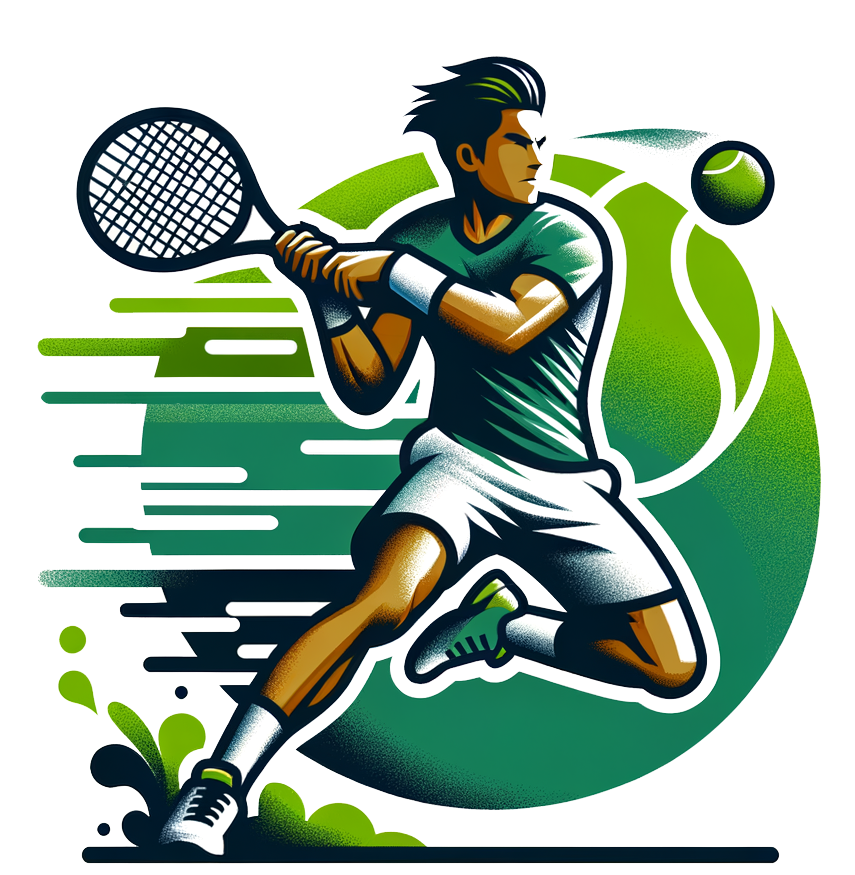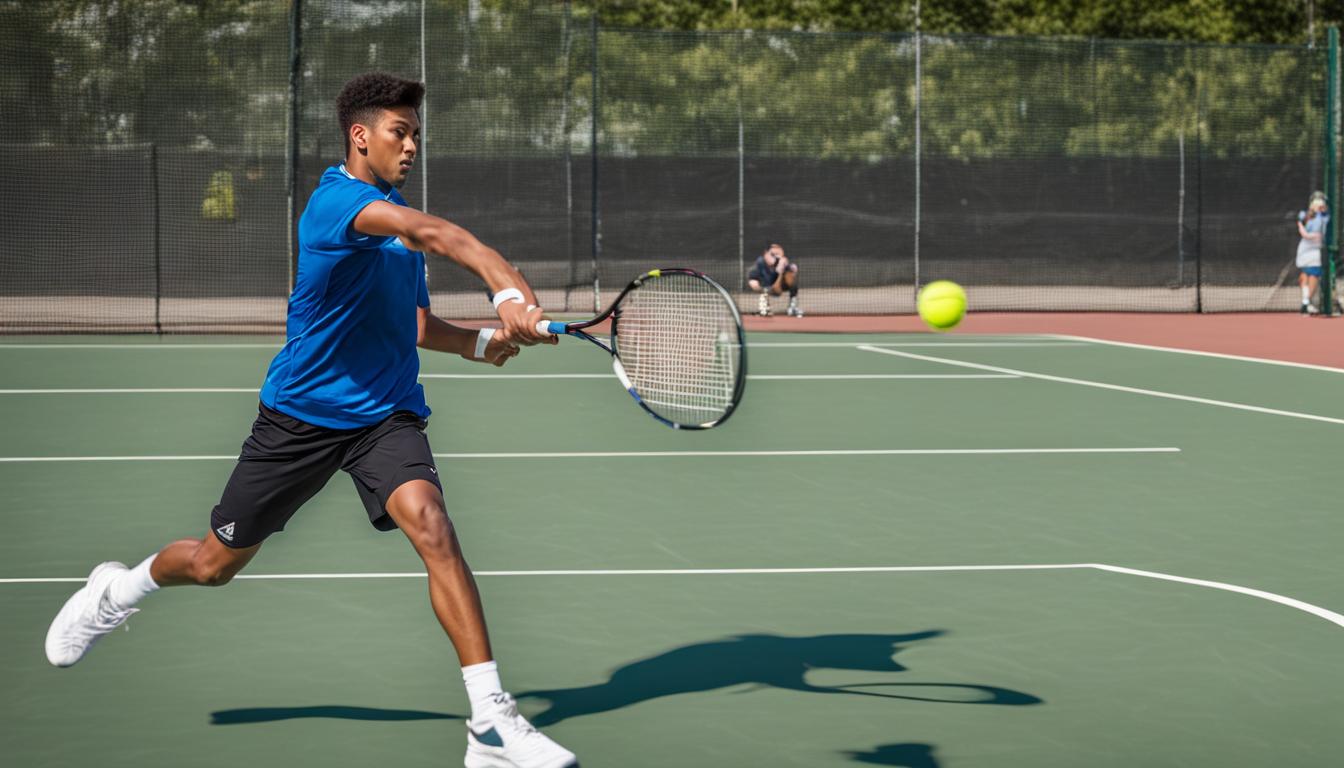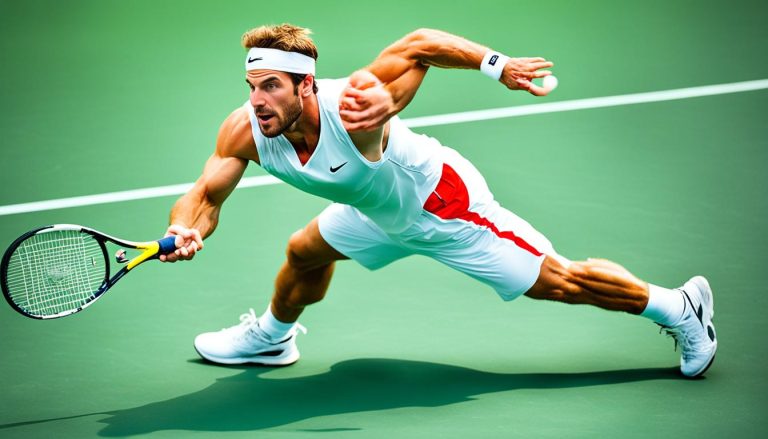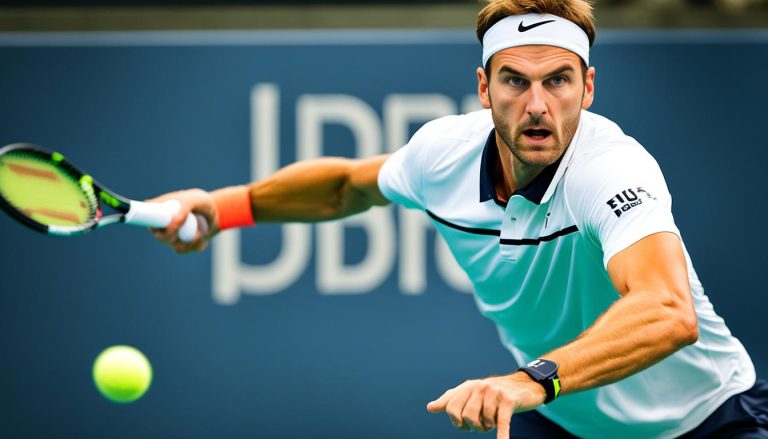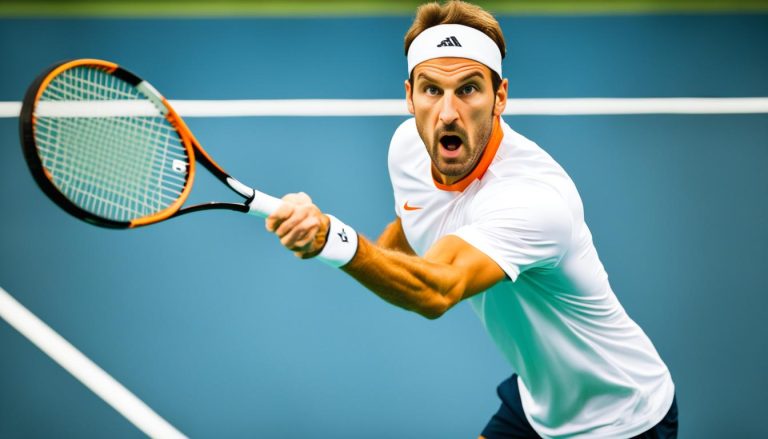Advanced Tennis Techniques: The Approach Shot Mastery
Mastering the approach shot is essential for tennis players who want to elevate their game and outplay their opponents. By incorporating advanced tennis techniques and strategic tennis strategies, players can achieve approach shot mastery and gain a competitive edge on the court.
In this article, we will explore four must-have shots that can help you improve your approach shot mastery and enhance your overall tennis skills. From the forehand drop shot to the high roller, swing volley, and chip lob return, these shots will add depth and versatility to your game, making you a more accomplished and difficult player to beat.
Are you ready to take your tennis game to the next level? Let’s dive into these advanced techniques and unlock your full potential on the court.
The Forehand Drop Shot
The forehand drop shot is a winning tactic that can catch opponents off-guard and turn the tide of a point. This strategic move requires fast hands and the ability to generate underspin, creating a shot that floats just over the net and falls abruptly, often out of reach for the opposing player.
Executing the forehand drop shot with control and disguise is essential to maintain the element of surprise. By disguising it as a regular forehand stroke, players can deceive their opponents and exploit open spaces on the court. The key is to avoid too long of a swing, which could result in a ball that sits invitingly at the service line, giving the opponent an opportunity to counterattack.
“The forehand drop shot is a powerful weapon in a player’s arsenal. It keeps the opponent guessing and disrupts their rhythm, setting up opportunities to take control of the point.” – Tennis Pro
Mastering this winning tactic requires practice and precision. Players must hone their ability to generate just enough underspin, threading the ball over the net with accuracy and height. The forehand drop shot can be a game-changer, allowing players to mix up their shots and keep the opponent on their toes.
Remember, the forehand drop shot is just one of the many effective winning tactics and tennis strategies available. Stay tuned for the next sections detailing more advanced techniques to elevate your game and give you the competitive edge.
Key Takeaways:
- The forehand drop shot is a strategic move that catches opponents off-guard.
- Fast hands and the ability to generate underspin are essential for executing the shot effectively.
- Disguising the drop shot as a regular forehand stroke can deceive opponents and create openings on the court.
- Avoiding a long swing prevents the ball from sitting at the service line, giving opponents an opportunity to counterattack.
The High Roller
The high roller shot is a valuable weapon in a tennis player’s arsenal, known for disrupting an opponent’s rhythm and drawing out errors. This strategic shot involves changing the tempo, speed, and trajectory of the stroke to create a looping drive with plenty of margin over the net. By using this technique, players can keep their opponents off balance and force them into making mistakes.
To execute the high roller shot effectively, two key factors come into play: height and topspin. Generating enough height allows the ball to clear the net comfortably, ensuring a safe margin for the shot to drop into the desired court area. The right amount of topspin helps control the trajectory and bounce of the ball, making it challenging for the opponent to anticipate and return with precision.
“The high roller shot can be a game-changer in tennis. It adds variation and unpredictability to your game, causing frustration and errors in your opponents. Mastering this shot requires practice and understanding of the right timing and technique.” – Roger Federer
When executing the high roller shot, players should focus on keeping a smooth swing and generating topspin by brushing up the back of the ball. Remember to adjust the power and speed of the shot according to the situation – a slower, higher shot can be used to alter the pace of the game, while a faster, more aggressive shot can put additional pressure on the opponent.
By incorporating the high roller shot into your tennis strategies, you can gain an advantage over your opponents and increase the chances of winning points. It is a versatile tactic that can be used as a defensive tool to regain control during rallies or as an offensive shot to put pressure on your opponent.
| Benefits of the High Roller Shot | Considerations for Success |
|---|---|
|
|
The high roller shot is a powerful tool that can elevate your tennis game. By incorporating this winning tactic into your strategies, you can create opportunities, frustrate opponents, and take control of the court. Practice and refine the high roller shot to add versatility and unpredictability to your game, giving you a competitive edge.
The Swing Volley
In tennis, the swing volley is a dynamic and strategic shot that can give you a winning edge. It is a smart improvisation when your opponent’s serve or groundstroke produces a soft, floating return. By moving forward and intercepting the shot while it’s still in the air, you can take control of the rally and put your opponent on the defensive.
To execute a successful swing volley, there are a few important techniques to master. First, make contact with the ball at shoulder height to ensure optimal power and accuracy. This allows you to strike the ball cleanly and with enough force to make it difficult for your opponent to return.
Second, it is crucial to avoid swinging across your body when hitting the swing volley. This can lead to mistimed shots and loss of control. Instead, focus on keeping your swing fluid and following through in the direction of your target. By maintaining proper form, you maximize your chances of executing an effective swing volley.
The swing volley is a versatile shot that can be used in various situations on the tennis court. It can be particularly useful when your opponent is positioned deep behind the baseline, giving you the opportunity to rush the net and assert dominance. The swing volley can also be a valuable weapon when approaching the net after a well-placed serve.
Mastering the swing volley requires practice and a deep understanding of the game’s strategies. Incorporating this shot into your repertoire can elevate your tennis game and give you a competitive advantage. Remember to stay focused, watch the ball closely, and anticipate your opponent’s shots to position yourself for the perfect swing volley.
| Advantages of the Swing Volley | Challenges of the Swing Volley |
|---|---|
|
|
By honing your swing volley skills and incorporating it into your overall tennis strategy, you can become a more formidable player on the court. Prepare to surprise your opponents and gain the upper hand with this powerful and effective shot.
The Chip Lob Return
The chip lob return is a delicate shot that can be used as an offensive tactic on a return of serve. It’s not meant to win the point outright, but rather to turn the tables and seize control of the net. Using volley technique and a more compact swing can help execute the shot effectively. Avoiding too much of a backswing is crucial to maintain distance control.
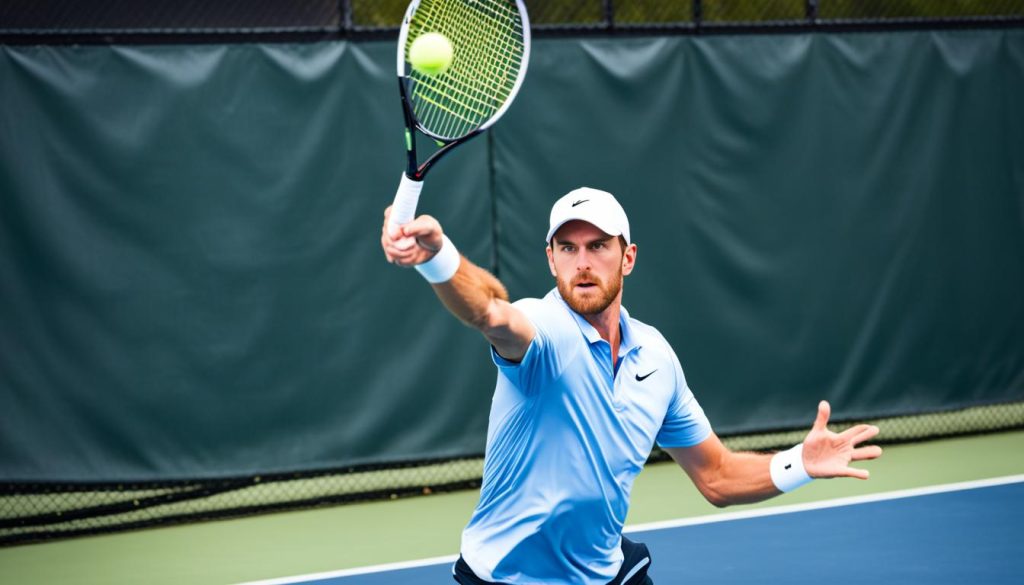
The chip lob return is a strategic tennis shot that requires precision and finesse. It involves using a chip shot, which is a shorter backswing, to return a serve with an elevated lob over the opponent. This technique allows the player to neutralize the serve, disrupt the opponent’s rhythm, and gain the advantage by taking control of the net.
Executing a successful chip lob return requires a combination of skill and strategy. Here are some key points to consider:
- Placement: Aim to hit the ball deep and towards the sides of the court, away from the opponent’s comfort zone. This will make it harder for them to attack your return.
- Timing: Anticipate the server’s contact point and prepare early to make a clean contact with the ball. This will give you better control over the direction and trajectory of your chip lob return.
- Shot selection: Choose the right shot based on the situation. A crosscourt chip lob return can be effective in creating an angle and forcing the opponent out of position. On the other hand, a down-the-line chip lob return can catch the opponent off guard and open up the court.
“The chip lob return is a valuable weapon in a player’s arsenal. It allows you to disrupt your opponent’s rhythm and take control of the net, setting yourself up for a winning point.”
Remember, the chip lob return is not about hitting a winner, but rather about gaining control of the point and putting yourself in a favorable position. Practice this shot to add another dimension to your game and keep your opponents guessing.
Mastering Tennis Strokes and Shots
In addition to approach shots, mastering basic tennis strokes and shots is essential for overall game improvement. Developing a strong foundation in these fundamental techniques is key to success on the court. Let’s explore some of the key strokes and shots that every tennis player should aim to master:
Serves
Serves are crucial for starting points and setting the tone of the game. Mastering different types of serves can give players an advantage and keep opponents guessing. Here are three essential serves:
| Kick Serve | Flat Serve | Slice Serve |
|---|---|---|
| A serve that spins and bounces high, forcing the opponent out of position. | A powerful serve with minimal spin, aimed for speed and accuracy. | A serve with sidespin that moves away from the opponent, causing difficulty in returning. |
Tennis Shots
Alongside mastering different strokes, understanding and implementing a variety of shots can give players a competitive edge. Here are some key shots to focus on:
- Pass Shot: A shot played to pass the opponent at the net, often with speed and accuracy.
- Overhead: An offensive shot played when the ball is hit high above the player’s head.
- Drop Shot: A delicate shot that requires soft touch and precision, often used as a surprise tactic to catch opponents off guard.
Proper technique is crucial in mastering these strokes and shots. Working with a coach or trainer can help players develop correct form, ensuring maximum efficiency and effectiveness on the court. This attention to technique also helps prevent common injuries such as tennis elbow, allowing players to continue playing at their best.
Quote:
“Mastering tennis strokes and shots is the foundation of a well-rounded and skillful player. By refining technique and expanding shot selection, players can elevate their game to new levels of performance and success.” – Tennis Pro
The Game-Based Approach to Tennis Coaching
The game-based approach to tennis coaching is a highly effective strategy that focuses on teaching players through real game situations and tactics. By immersing players in scenarios they are likely to encounter during match play, this approach helps them develop their skills in a practical and dynamic way.
Unlike traditional coaching methods that primarily focus on technique and drills, the game-based approach emphasizes the importance of situational awareness and decision-making. Players are encouraged to analyze each situation and make strategic decisions based on factors such as opponent positioning, court positioning, and game context.
By learning to adapt their technique and tactics to different game situations, players can improve their overall performance on the court. This approach not only enhances their ability to execute specific tennis shots but also fosters a deeper understanding of the game and its intricacies.
Coaching strategies based on the game-based approach are tailored to each player’s individual strengths and weaknesses. Coaches design practice sessions that simulate actual game conditions, allowing players to practice their skills in a realistic setting. This helps develop their ability to think critically and make sound decisions under pressure.
Tennis tips derived from the game-based approach include:
- Focus on decision-making: Encourage players to analyze each situation and make strategic choices based on their understanding of the game.
- Develop versatility: Train players to adapt their technique and tactics to different game scenarios, enabling them to handle a variety of opponents and playing conditions.
- Enhance situational awareness: Teach players to pay attention to their surroundings, including the position of their opponent, the court, and the score, in order to make more informed decisions.
- Promote creativity and problem-solving: Encourage players to experiment with different shots and tactics, allowing them to develop their own unique playing style and find effective solutions to on-court challenges.
By incorporating the game-based approach to tennis coaching, players can enhance their skills, elevate their performance, and gain a competitive edge on the court.
Case Study: Integrating the Game-Based Approach
To illustrate the effectiveness of the game-based approach, let’s examine the training methodology of renowned tennis coach Patrick Mouratoglou. As the coach of Serena Williams, Mouratoglou has successfully integrated the game-based approach into his coaching strategies.
Mouratoglou believes that traditional training methods focusing solely on technique do not adequately prepare players for the complex nature of competitive tennis. Instead, he emphasizes the importance of incorporating game situations into practice sessions and allowing players to learn through experience.
Under Mouratoglou’s guidance, Serena Williams has honed her skills by practicing specific game scenarios, such as serving and returning on break points or playing under pressure in tiebreakers. This targeted approach has helped Williams develop the necessary skills and decision-making abilities to excel in high-stakes situations.
By adopting the game-based approach, Mouratoglou has guided Williams to numerous Grand Slam titles and sustained success at the highest level of the sport.
Key Elements of the Game-Based Approach
| Elements | Description |
|---|---|
| Situational awareness | Encourages players to assess on-court conditions and make informed decisions based on opponent positioning, court positioning, and game context. |
| Adaptability | Trains players to adjust their technique and tactics to different game scenarios, enabling them to handle a variety of opponents and playing conditions. |
| Decision-making | Emphasizes critical thinking and problem-solving skills, allowing players to choose the most effective shots and strategies for each situation. |
| Creativity | Encourages players to experiment with different shots and tactics, fostering the development of a unique playing style and the ability to find innovative solutions on the court. |
Conclusion
Elevating your tennis game requires mastering advanced techniques like the approach shot and developing a competitive edge through skill development and strategic play. By incorporating the forehand drop shot, high roller, swing volley, and chip lob return into your arsenal, you can expand your options on the court and improve your chances of winning matches.
Additionally, embracing the game-based approach to coaching can enhance your understanding of real game situations and elevate your overall performance. By learning to make decisions based on the situation, you can improve your technique and gain a competitive edge. With consistent practice and refinement of your skills, you can become a more accomplished and competitive tennis player.
Remember, sports training is key to success on the tennis court. By staying committed to skill development and seeking expert tips, you can continually improve your game and stay ahead of the competition. Whether you’re a beginner or an experienced player, the pursuit of mastery in tennis requires dedication, perseverance, and a passion for the sport.
